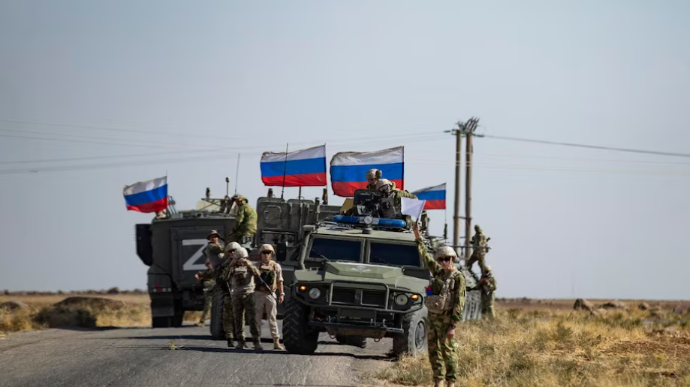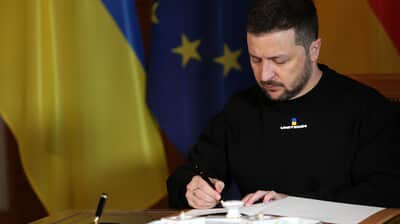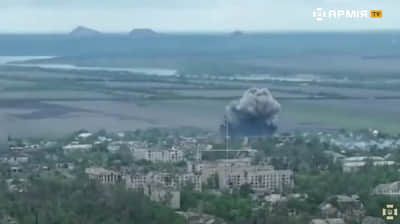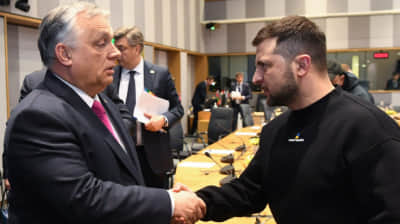Ukraine plans attacks on Russian forces in Syria – The Washington Post

A leaked top-secret US intelligence document has revealed that the Chief Intelligence Directorate of the Ministry of Defence of Ukraine was developing plans to conduct covert attacks on Russian troops and mercenaries of Wagner Group PMC in Syria, using secret assistance from local Kurds - however, President Volodymyr Zelenskyy ordered a halt to the planning of the operation in December.
Source: The Washington Post
Details: According to The Washington Post, the introduction of a new battlefield — thousands of miles from the war in Ukraine — appeared to be designed to impose costs and casualties on Russia and its Wagner paramilitary group, which is active in Syria, and possibly force Moscow to redeploy resources from Ukraine.
According to the leaked documents, Ukrainian President Volodymyr Zelenskyy directed a halt to the planning in December. But the leaked document, based on intelligence gathered as of 23 January, lays out in detail how the planning progressed and how such a campaign could proceed if Ukraine revived it, The Washington Post said.
According to the outlet, the document — which in certain places bears the marking HCS-P, indicating that certain information is derived from human sources — details how officers of the Chief Intelligence Directorate, the Ukrainian Defence Ministry’s military intelligence service, could plan attacks on Russian troops in Syria. However, Kyrylo Budanov, the Chief of Ukrainian Defence Intelligence, refused to comment on that.
The documents indicate that Ukrainian military intelligence officers favoured striking Russian forces using unmanned aerial vehicles and starting "small" - that is, possibly limiting their strikes only to forces of the Wagner mercenary group.
Ukrainian officers, The Washington Post said, considered training operatives of the Syrian Democratic Forces (SDF), the military force of Syria’s Kurdish-controlled autonomous northeast, to strike Russian targets and conduct "unspecified "direct action" activities along with UAV [unmanned aerial vehicle] attacks."
As it was noted, the SDF sought training, air defence systems and a guarantee that its role would be kept secret in exchange for supporting Ukrainian operations. The leadership of the SDF also forbade any strikes on Russian positions in Kurdish areas.
"The documents that you are talking about regarding our forces are not real (...) our forces have never been a side in the Russian-Ukrainian war", said Farhad Shami, an SDF spokesperson, in a comment to The Washington Post.
The leaked document, as The Washington Post noted, indicates that Türkiye was aware of the planning, stating that Turkish officials "sought to avoid potential blowback" and suggested that Ukraine stage its attacks from Kurdish areas instead of those in the north and northwest held by other rebel groups, with some of them being backed by Türkiye.
The Washington Post said that Türkiye opposes the SDF, and also considers its core military element, the People’s Protection Units or YPG, to be a terrorist group. The SDF is the main partner of the U.S. troops in Syria, where they often share bases on an ongoing mission to stifle the resurgence of the Islamic State.
In November, according to the leaked document, Ukrainian military intelligence officers identified potential logistical constraints to their ambitions, including "issues with intra-Kurdish border controls and establishing a base of operations".
"By 29 December, the officers appear to have found out that Zelenskyy had halted their planning. It is uncertain why Zelenskyy ordered the Chief Intelligence Directorate to cease planning operations, but the document assesses that he may have done so for a variety of reasons: U.S. pressure, Ukraine’s limited supply of drones or doubts about whether the attacks could succeed.
Another factor could have been the success of military intelligence operations in Russia. The document states the Chief Intelligence Directorate has been aggressive in staging sabotage, assassination and destabilising operations in Russian-controlled areas in Ukraine. These areas probably offer advantages in logistics, language and other variables," The Washington Post said in its article.
Kyiv is unlikely to revive the plans, but if Ukraine did proceed, attacks could "incur a Russian response targeting US interests in the region if support for an operation is attributed to the United States", the document emphasised.
The document goes into detail about what a campaign of "notional" covert Ukrainian attacks might look like, ranking them by the likelihood that they would cause Russia to escalate in response. It weighs attacks on well-defended "priority" Russian facilities near Damascus and the Syrian coast, which would be the most dangerous for the attackers but the most costly for Russia, against strikes on "Russia-affiliated petroleum infrastructure" in central Syria, which is poorly protected by air defence systems but would only impose "modest costs" on Russia, particularly on the Wagner group.
The Syrian battlefield "provides deniability options" to Ukraine, the document states, because it could attack Russian positions previously struck by Syrian rebels, launch attacks from rebel or even regime-held areas, and attribute attacks to "front, defunct or active nonstate groups".
The Washington Post added that the documents mention a real but previously undisclosed 27 November incident, in which a Russian SA-22 air defence system based in eastern Syria fired on a U.S. MQ-9 drone. The missile did not hit its target, a U.S. official said.
Background:
- On 7 April, The New York Times, citing sources in the White House, reported a data leak: allegedly classified military documents detailing US and NATO plans to build up the Ukrainian army before a planned counteroffensive had appeared on Twitter and Telegram. More and more documents are appearing in the media.
- Bellingcat investigators found that the classified data was distributed on 1 and 2 March on a Discord server called WowMao, but the original source may have revealed the documents even earlier.
- Associated Press journalists talked to users of the Discord platform, and they found out that the secret documents were allegedly distributed by a user with the nickname "Lucca", who may be a "child".
- The UK Defence Ministry warned of a "serious level of inaccuracy" in allegedly leaked US classified documents relating to the war in Ukraine.
- Ukraine has already changed some of its military plans because of the leaked classified US documents, and this is delaying its counteroffensive, according to media reports.
- The US Department of Justice has launched an investigation into the leak of a huge number of US intelligence documents, and the US State Department has stated that the incident with the publication of classified documents will not affect support for Ukraine in the war with Russia.
- According to media reports, the leak of classified documents has caused a crisis in relations between the United States and its allies.
- The US Department of Defense said it would have findings on the Internet leak of classified documents within 45 days.
Journalists fight on their own frontline. Support Ukrainska Pravda or become our patron!







